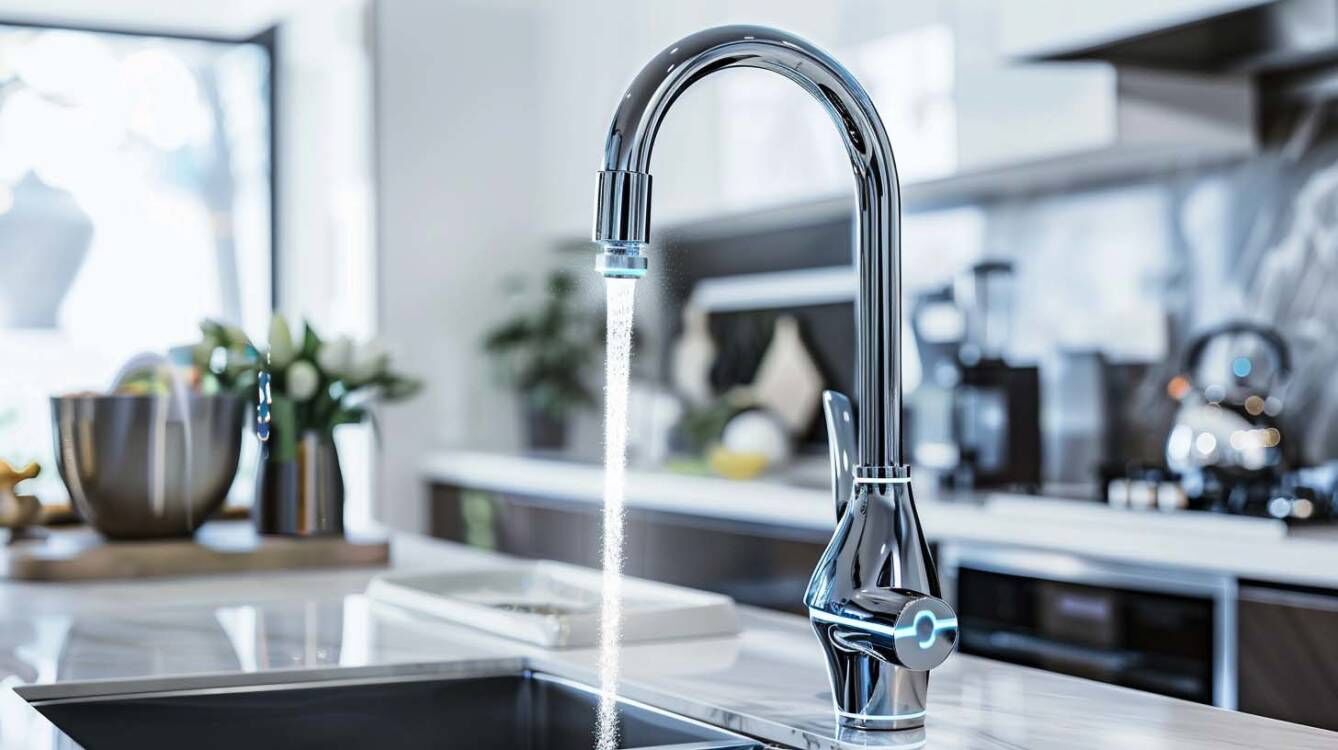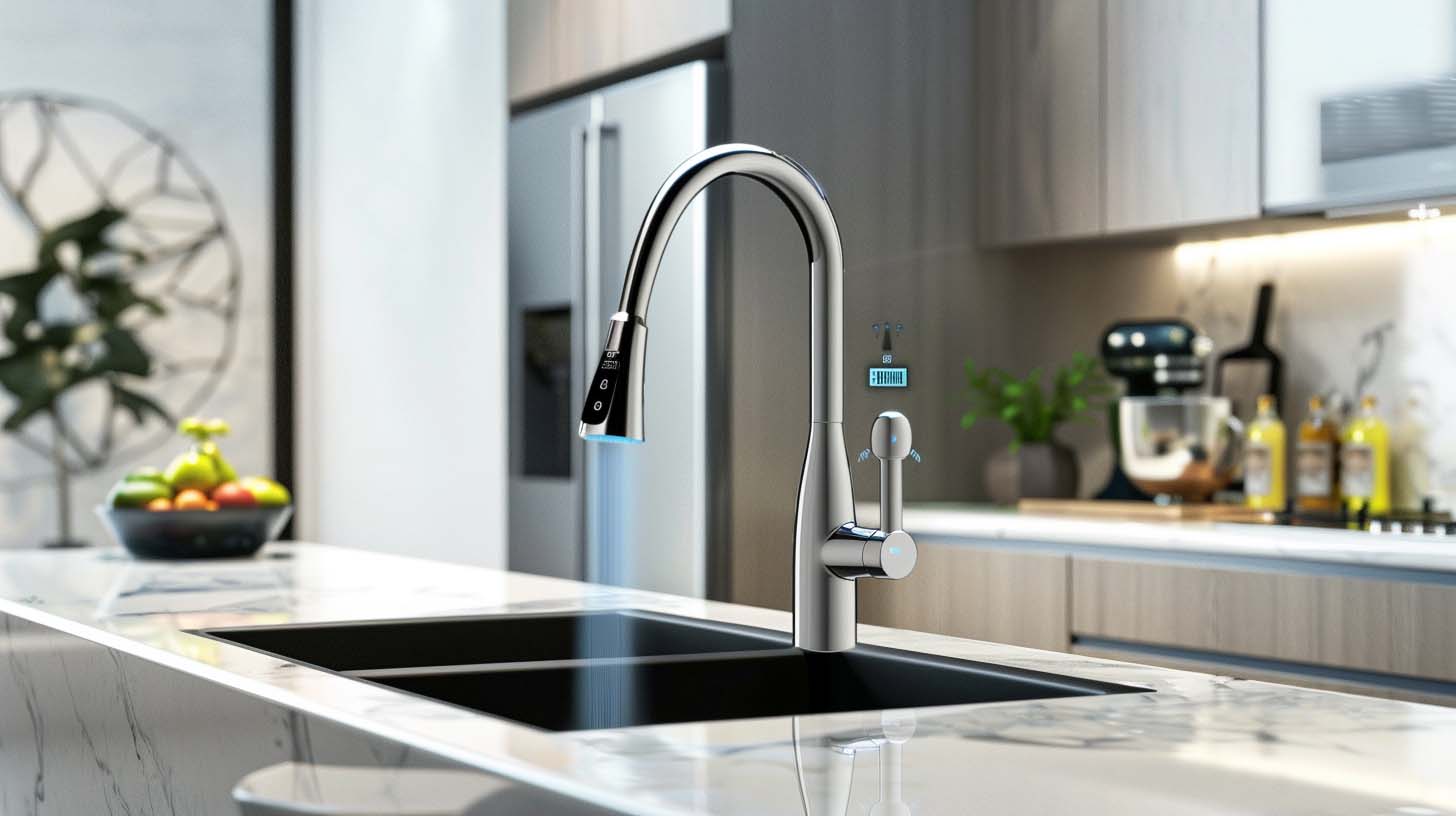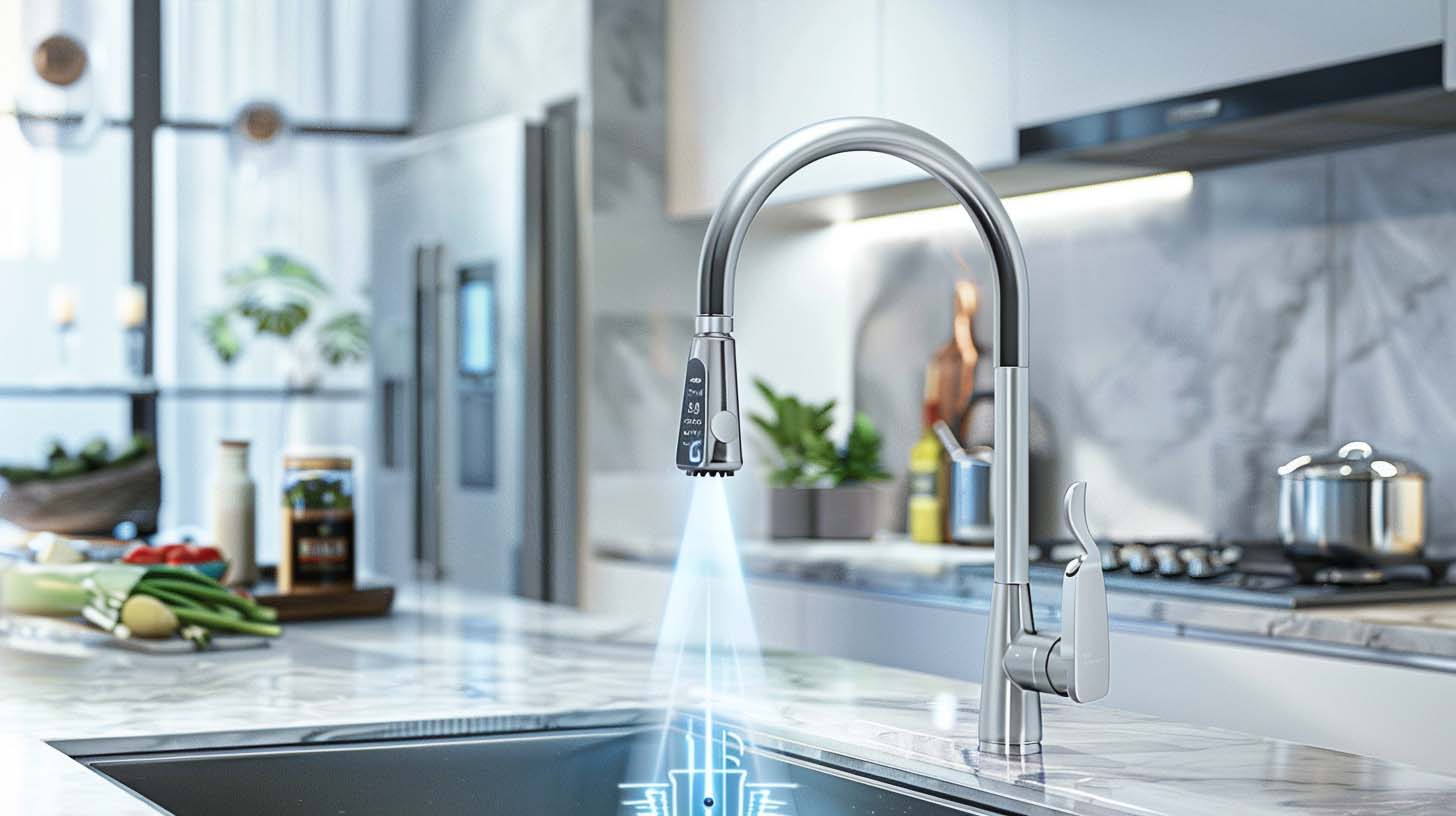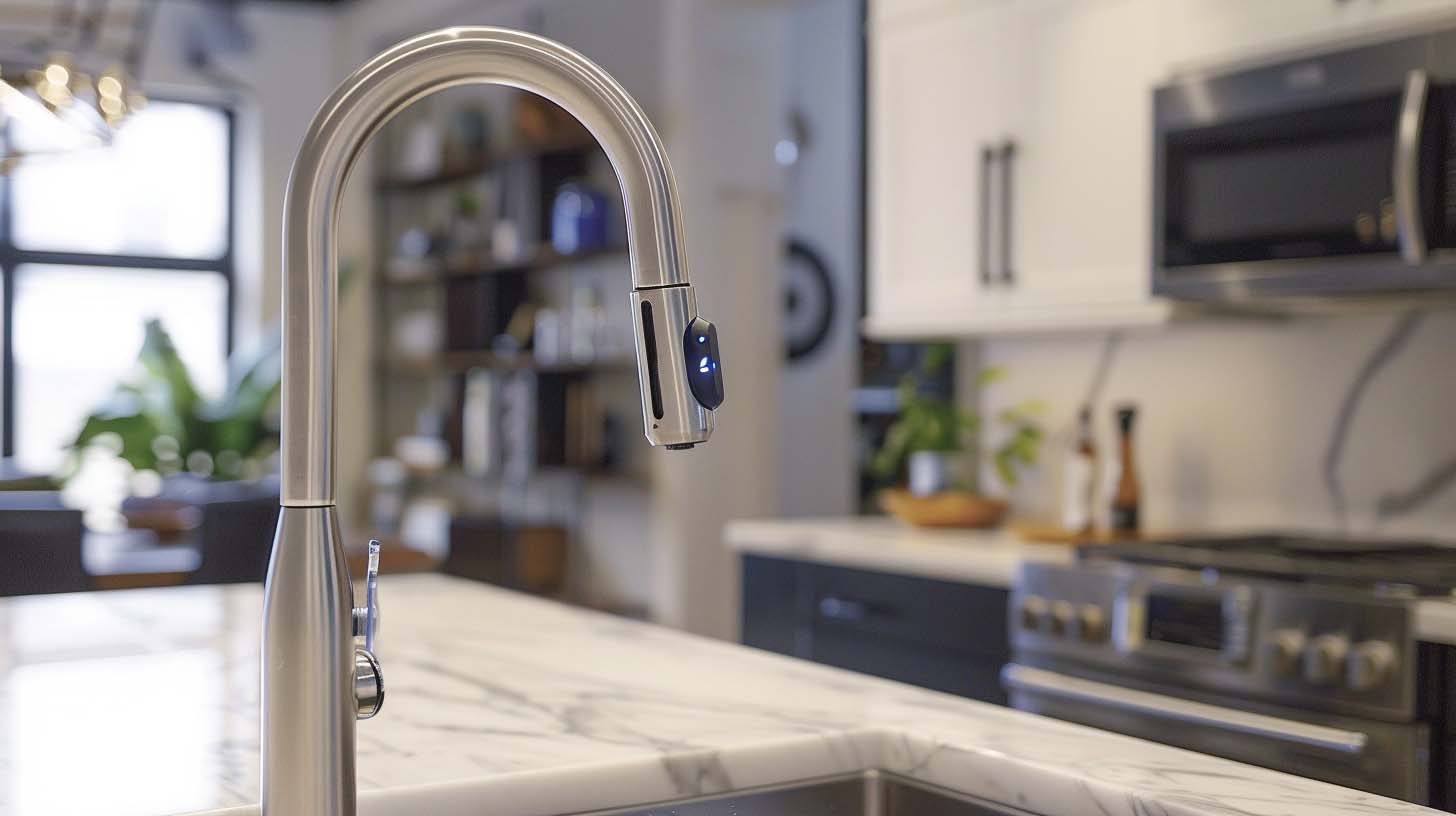In the evolving landscape of home automation, the smart kitchen faucet emerges as a pivotal innovation, transforming mundane kitchen tasks into seamless, hygienic interactions. Equipped with capabilities such as voice activation, motion sensors, and personalized water temperature settings, these faucets cater to the growing demand for convenience and efficiency in the modern household. Additionally, the integration of water usage analytics aids in promoting sustainable living practices. As we consider the implications of such advanced technology in our daily lives, one must ponder ?how does the smart kitchen faucet align with the broader objectives of smart home integration and environmental sustainability?

- A smart kitchen faucet operates using advanced technologies like voice activation, touch sensitivity, or motion detection.
- These faucets offer hands-free operation, enhancing hygiene by reducing physical contact and the spread of germs.
- Features include customizable water temperature and flow settings, and integration with digital assistants for voice-controlled functionality.
- Smart faucets often come with water monitoring systems that provide feedback on usage, promoting efficient water consumption.
- Though more expensive initially, smart kitchen faucets can lead to water and cost savings over time, and potentially increase home value.
A kitchen faucet operates by manipulating a valve that regulates the flow of water through its spout, controlled typically by a handle or set of handles. This fundamental mechanism, which has evolved significantly over time, represents a synergy of hydraulic engineering and user-centric design. At its core, the operation involves the adjustment of water pressure and temperature through precision-engineered components.
The heart of this system is the valve, which comes in various types including ball, ceramic disc, and compression. Each type offers distinct advantages in terms of durability and leak prevention. For instance, ceramic disc valves are renowned for their longevity and resistance to wear, making them highly suitable for frequent use environments.
Water flow is initiated or halted by the movement of the handle(s), which adjust the valve's position. The alignment of the valve either blocks or allows water passage, thereby controlling the flow rate. Additionally, the aeration process, often integrated within the faucet's spout, introduces air into the water stream.
This not only conserves water but also guarantees a uniform flow, minimizing splashes and enhancing the overall efficiency of water usage. This mechanism, while simple, plays an essential role in daily kitchen activities, reflecting an intersection of functionality and innovation.

Building on the fundamental design of traditional kitchen faucets, smart kitchen faucets introduce advanced technology to enhance functionality and user convenience. The market offers several types, each tailored to specific user needs and technological preferences.
Voice-activated models represent a noteworthy category, allowing users to operate the faucet through voice commands. This type connects to home automation systems and is ideal for hands-free operation, greatly assisting in multitasking or when hands are otherwise occupied.
Touch-sensitive faucets are another popular type. Equipped with sensors, these faucets require a simple touch to activate water flow. This feature not only facilitates ease of use but also promotes hygiene by minimizing contact with the faucet surface, thereby reducing the spread of germs.
Motion detection faucets offer a further enhancement in user convenience and hygiene. They utilize infrared sensors to detect hand movement near the spout to start and stop water flow automatically. This type is particularly useful in preventing water wastage and enhancing cleanliness.
How do intelligent kitchen faucets improve the functionality and convenience of modern kitchens?
These innovative fixtures bring a high level of efficiency and adaptability through advanced technology integration. Primarily, smart faucets offer touchless operation, an essential feature that notably reduces the spread of germs and facilitates ease of use during cooking or cleaning. By simply gesturing or using voice commands, users can activate the flow of water, adjusting the temperature and pressure without physical contact.
Furthermore, smart kitchen faucets often come equipped with features such as water monitoring systems. These systems provide real-time feedback on water usage and can alert users about potential leaks, which not only conserves water but also prevents costly damage. Additionally, some models offer customized settings that allow individuals to save their preferences for water temperature and flow rate, thereby enhancing user experience and satisfaction.
The integration of digital assistants into smart faucets further extends their functionality. Users can set timers, receive precise measurements for cooking, or get reminders for filter changes, all of which contribute to a streamlined kitchen operation.
The detailed analytics provided by these faucets enable a deeper understanding and more conscious control over water consumption, aligning with contemporary concerns over resource sustainability.

Considering the advanced features and benefits outlined, evaluating the cost-effectiveness and overall value of investing in a smart kitchen faucet becomes a pertinent discussion. Smart faucets, equipped with technologies like voice activation, temperature control, and usage tracking, cater to a modern lifestyle focused on convenience, efficiency, and sustainability. These faucets offer a hands-free experience that not only enhances hygiene by limiting the spread of germs but also conserves water by precisely controlling flow based on user needs.
From an economic standpoint, the initial investment in a smart faucet is higher than that of a traditional tap. However, the savings generated through reduced water consumption can offset this cost over time. Additionally, the integration of smart faucets into home automation systems can increase property value, appealing to tech-savvy buyers and investors.
Analytically, the decision to invest in a smart faucet should consider the frequency of use and the importance placed on the benefits it offers. For households prioritizing technology that simplifies tasks and promotes sustainability, a smart faucet is unquestionably a worthwhile investment. Conversely, for those less inclined towards technological integration in daily activities, the traditional alternatives might suffice.
To sum up, the emergence of smart kitchen faucets signifies a notable leap forward in the integration of technology within household areas. This development is reminiscent of the transformation brought about by the Industrial Revolution regarding efficiency and innovation.
These devices not only redefine the interaction between humans and their kitchen environments but also underscore a broader movement towards sustainable living by optimizing water usage. Therefore, investing in a smart faucet emerges as a wise choice for the contemporary, eco-conscious household.
 Get More Information!
Get More Information!